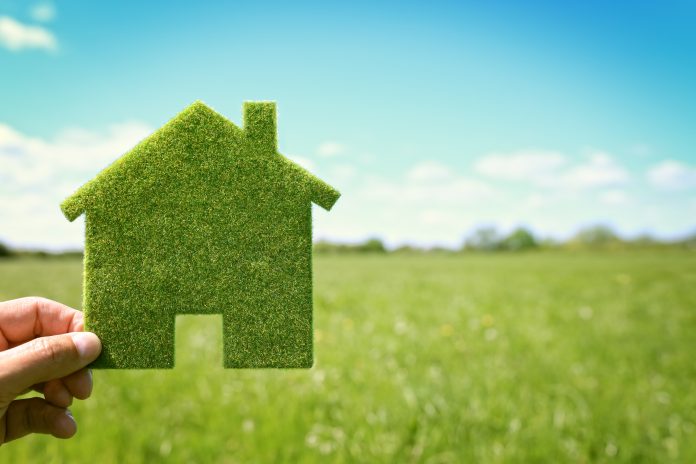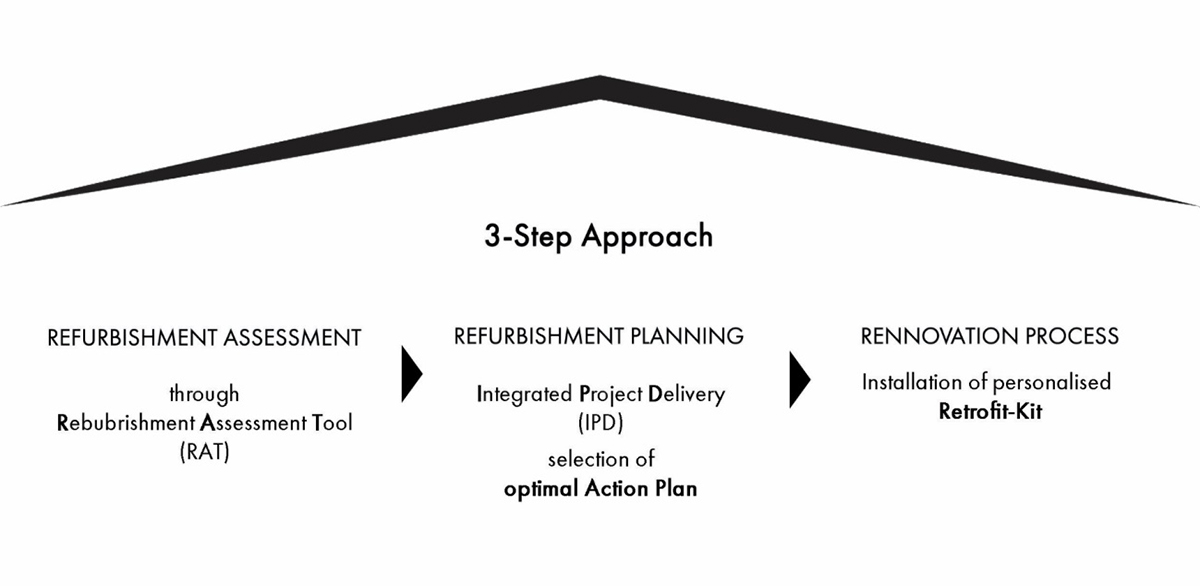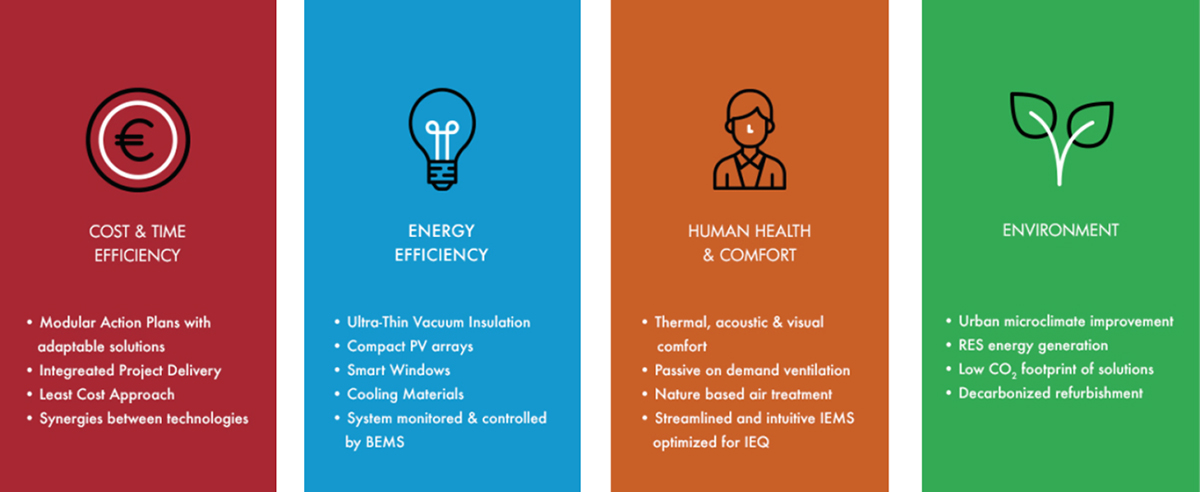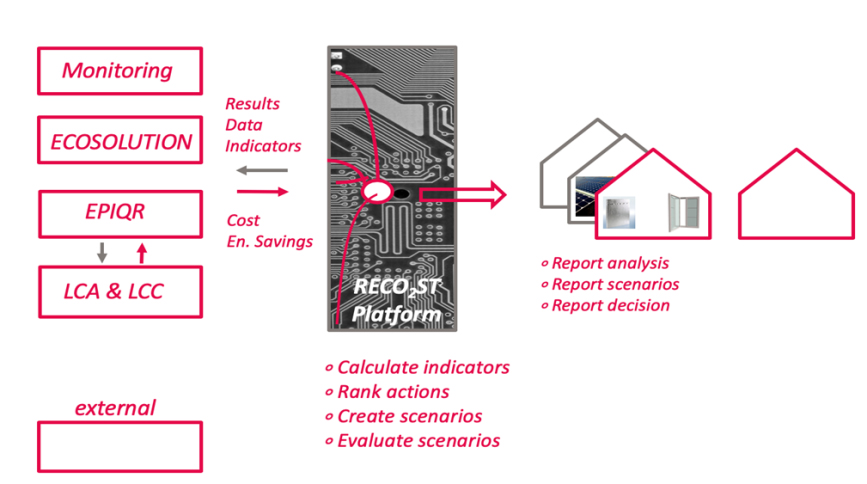Denia Kolokotsa, Associate Professor at the Technical University of Crete, discusses how ReCO2ST could create a cleaner environment
Recognising the need to accelerate renovation of the EU building stock, ReCO2ST has developed a methodology and the tools to achieve systematic deep renovation of residential buildings. The ReCO2St approach consists of three steps starting with 1. the refurbishment assessment, conducted via the Refurbishment Assessment Tool (RAT), 2.the refurbishment planning, guided by Integrated Project Delivery for an optimal Action Plan, and 3. implementation of the selected renovation scenario that includes a personalised technology Retrofit-Kit.
The renovation approach suggested by ReCO2ST, apart from improved energy performance to NZEB levels, targets cost & time efficiency of the process as well as the achievement of better living standards for the occupants and an overall cleaner environment.
Four European cities are participating in ReCO2ST offering demonstrator sites for application of the approach. The demonstrators are in Cadiz (Spain), Vevey (Switzerland), London (UK) and Frederkshavn (Denmark) and are all residential buildings from the beginning (Vevey) and the mid (Cadiz, London, Frederkshavn) of the 20th century.
ReCO2ST RAT platform
Implementation of the least-cost methodology is facilitated through the RAT platform, which is the central tool in the retrofit pre-project phase. The RAT is a web-based application that enables building of renovation scenarios and selection of the optimal scenario.
Within ReCO2ST, EPIQR+1 and EcoSolution2 have been adapted to communicate with the platform, as well as a newly developed module for LCA. However, the platform may also communicate with other tools depending on their communication protocols. The RAT operates independently from the tools with which it can communicate.
ReCO2ST Retrofit-Kit
Under ReCO2ST a set of innovative technologies have been developed and considered of the renovation scenarios of the demo buildings. The developed technologies include:
Concentrating PV: Asymmetric Compound Parabolic reflector based CPV panels were found to achieve a theoretical optical efficiency of 100% over a large range of angle of incidence of ± 60°. (BUL)
Smart Windows: In ReCO2ST a new smart window has been developed by combining an existing ventilated window (Horn) with an air based solar collector and heat exchanger, a Phase Change Material an air to water heat pump on exhaust air and an intelligent control solution . The solution includes also a night cooling option to improve summer comfort. Depending on climate the saving potential can be up to 40-60%.
Vacuum Insulation Panels (VIP): Different types of newly developed polymer foam have been tested by va-Q-tec as core material for VIPs as a new lightweight alternative to fumed silica. With a final VIP density of 150-200 kg/m² a thermal conductivity of less than 0.005W/mK was achieved.
Cooling Evaporative effect Ventilated Façade (CEVF): Developed at University of Cadiz the technology is based on the ability to remove heat from the upper building floor due to the evaporative effect. Experiments show that this technology can decrease the temperature of the adjacent space on average up to 4°C, reducing or even eliminating the need for air conditioning.
HVAC: Two systems were selected for installations in ReCO2ST demo-sites. A PCM-based air conditioning and ventilation system has been installed in the UK demo site for further testing. An Innovative Air Handling Unit (IAHU) system is designed, in collaboration between UTRC-I, UCA and UTC Commercial HVAC in Culoz France and will be installed in the Spanish demo site.
Nature Based Technology (NBS): NBS with potted plants has been developed by Alchemia-Nova, which can improve indoor air quality and thermal comfort by means of treatment of indoor air contaminants, and by providing optimal air temperature and relative humidity levels. Purification is accomplished through the roots and/or through the leaf area. Lab tests indicate that a NBS unit is able to reduce Particulate Matter (PM2,5 and PM10) by about 40% and Volatile Organic Compounds by about 30%.Two different system types have been designed, a stand-alone unit and a semi-centralised unit that can be installed in a window.
Cool Materials: The application of cool materials aims at increasing the solar reflectance of the urban surfaces and decreasing the heat absorbed by them. Cool materials have been incorporated in most of the construction solutions for the outside surfaces of a building, like cool paints for roof and façade, cool waterproof membranes, cool tiles etc. and constitute suitable refurbishment solution in the urban environment. Cool paint solutions developed by members of the European Cool Roof Council are implemented in Cadiz and London. According to simulations, indoor temperature reduction of almost 5°C indoor is observed during midday in Cadiz top floor.
Integrated Project Delivery
The Integrated Project Delivery aims at approaching the process holistically instead of as a set of tasks. Therefore, collaborative work is promoted at tendering phase through adoption a business model, multi-party agreements (MPA) and description of allowed behaviors.
The aim is to select the right team to achieve the desired results (nZEB), apart from the professional qualifications and personal skills they must have. In addition the specific technical requirements on energy efficiency and sustainability are introduced, measurable technical specifications are included in the award criteria to have a more specific and objective assessment, as well as the procedure for the refinement and validation of targets, supporting tools for the commissioning and measurement of building performance throughout the construction and operation phases to validate compliance with the energy efficiency targets beyond the delivery of the project (which are also being developed within the project).
Case studies
Cadiz, Spain:
In Cadiz case study apartment building there is no HVAC installation. Therefore, the aim is to improve the comfort conditions by minimising the heating and cooling demand. A multi-objective optimization problem is solved using Pareto front to select the optimum technologies depicted in Table 1.
London:
This case study includes application of all ReCO2ST kit technologies for improvements to envelope, systems and renewable energy production. The technologies have been selectively applied with the view to access their performance in the operational building in terms of heating energy savings and improvements in thermal comfort and indoor air quality. In addition, improvements to the heating system were carried out.
Vevey:
The core intervention lies in the improvement of the thermal envelope and HVAC installations. Other improvements are carried out in order to increase the building attractiveness and value. These interventions are part of a sustainable development approach where social needs and economic balance are addressed. In Vevey, heating is now supplied by a wood powered (80%) urban heating. This new infrastructure offers a renewable opportunity that would not be possible otherwise. Renewable energy single plant (heat pump or wood furnace and stock) needs a lot of space that is frequently not available in refurbished buildings. This is a perfect example of the least-cost method where renewable energy supply at community level is more cost effective than wall insulation are heat recovery on the exhaust air. Green electricity will be produced and available for tenant via a community of self-consumers. Community of self-consumers is a new opportunity available by Swiss laws since the beginning of 2018.
Frederikshavn
The renovation actions for the Frederikshavn building include envelope and systems improvements. Renovation scenarios developed for the specific demo site indicate total primary energy savings in the range from 8% (10,7 kWh/m2 per year saved) to 52% (66.6 kWh/m2 per year saved).
1 F. Flourentzos, K. Droutsa, K.B. Wittchen, EPIQR software, Energy and Buildings, Volume 31, Issue 2, 2000, Pages 129-136, ISSN 0378-7788,
2 Online Version of EcoSolutions is freely usable under https://eb.peik.ch .
Please note: This is a commercial profile














